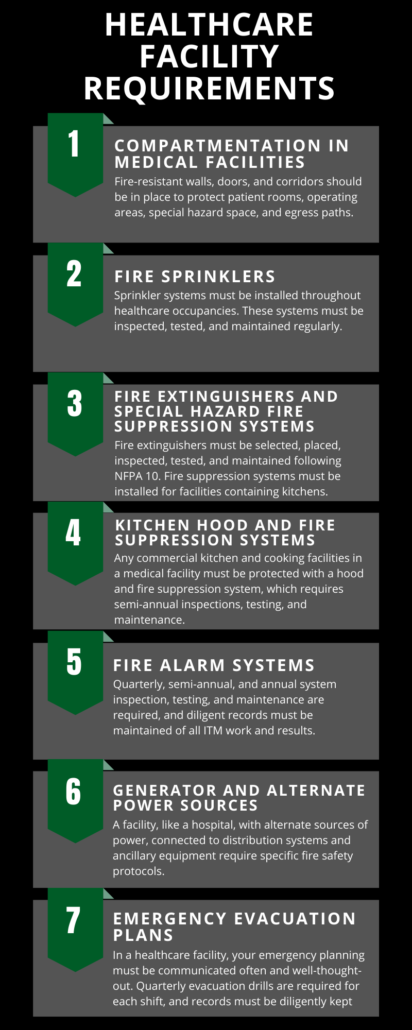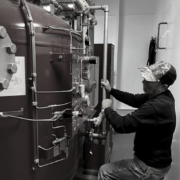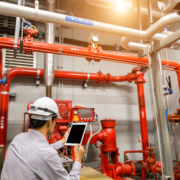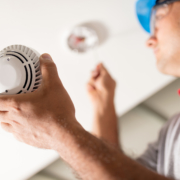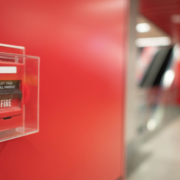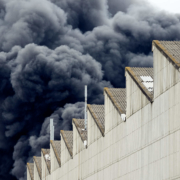HEALTHCARE FACILITY FIRE SAFETY REQUIREMENTS
THIS ISN’T GREY’S ANATOMY- AVOID THE UNNECESSARY DRAMA AND ENSURE YOU HAVE PROPER FIRE PROTECTION IN PLACE
Paging Dr. Grey. Code Red. A fire has broken out in Grey-Sloan Hospital and all the patients and doctors are at risk. We know… you’re glued to your television. This is some intense drama. While yes, a fire in a hospital makes for a drama-filled, intense episode of Grey’s Anatomy, we don’t want that to become a reality for your healthcare facility.
Healthcare facilities have greater requirements than most other facilities because they are governed by the Joint Commission. Because of these stringent requirements, hospitals need to be better equipped to withstand a sudden fire. You all hold lives in your hands every day and documentation is critical in your facilities to validate that you are upholding critical safety measures required by governing agencies such as NFPA and Joint Commission.
HERE ARE A FEW OF THE REQUIREMENTS NEEDED FOR YOUR HEALTHCARE FACILITY.
COMPARTMENTATION IN MEDICAL FACILITIES
Compartmentation typically utilizes a passive fire protection system that prevents or slows the spread of fire by walking it off. Fire-resistant walls, doors, and corridors should be in place to protect patient rooms, operating areas, special hazard space, and egress paths.
FIRE SPRINKLERS
Sprinkler systems must be installed throughout healthcare occupancies. These systems must be inspected, tested, and maintained regularly. Major components should be inspected quarterly, semi-annually, and annually. Each of these inspections requires specific components to be maintained.
FIRE EXTINGUISHERS AND SPECIAL HAZARD FIRE SUPPRESSION SYSTEMS
Any facility with a commercial kitchen or cooking facility requires hood and fire suppression systems to ensure fires don’t spread throughout the rest of the building. Fire extinguishers must be selected, placed, inspected, tested, and maintained following NFPA 10.
KITCHEN HOOD AND FIRE SUPPRESSION SYSTEMS
Any commercial kitchen and cooking facilities in a medical facility must be protected with a hood and fire suppression system, which requires semi-annual inspections, testing, and maintenance. Additionally, the filters and exhaust ductwork that make up the hood system require regular cleaning—the frequency of which is based on the amount of grease that is used in the cooking process. These specific requirements are outlined in NFPA 96: Standard for Ventilation Control and Fire Protection of Commercial Cooking Operations.
FIRE ALARM SYSTEMS
NFPA requires a fire alarm system throughout the facility. NFPA 72: National Fire Alarm and Signaling Code, outlines the installation and ITM requirements for these systems. A facility manager should understand the basic operation of fire alarms and what the various signals may mean. Quarterly, semi-annual, and annual system inspection, testing, and maintenance are required, and diligent records must be maintained of all ITM work and results.
GENERATOR AND ALTERNATE POWER SOURCES
A facility, like a hospital, with alternate sources of power, connected to distribution systems and ancillary equipment require specific fire safety protocols. Depending on your risk category your EES (Essential Electrical System) may change. Category 1 Requires Type 1 EES, Category 2 can use either Type 1 or Type 2 EES, Category 3 and 4 do not require and EES.
EMERGENCY EVACUATION PLANS
In a healthcare facility, your emergency planning must be communicated often and well-thought-out. Quarterly evacuation drills are required for each shift, and records must be diligently kept. General housekeeping of keeping egress paths clear, “no smoking” policies, decorated hallways and patient rooms should be fire-resistant, and soiled lines and trash should be regularly emptied is essential to communicate to your team.
With all these requirements, it’s important to understand exactly what you need to do in order to keep your building safe from harm. Here are a few items on your checklist you need to go over.
FIRE PROTECTION OPERATIONS:
- First and foremost, make sure your hazard emergency plans are in place and are well-thought-out for your specific building. Healthcare facilities must maintain emergency and evacuation plans, and employees must be regularly trained on these plans and their roles within them. Emergency plans should include instructions for fire emergencies and general building evacuations.
- Once you have found your plan, make sure all employees are trained regularly, and that training is documented. Quarterly evacuation drills are required for each shift, and records of these drills must be maintained. Additionally, hospital staff should be aware of and sustain general housekeeping standards. These activities include maintaining clear access to exits, enforcing “no smoking” policies, making sure decorations in halls and patient rooms are fire resistant and do not exceed allowed limits, and ensuring soiled linens and trash are regularly emptied and not permitted to accumulate beyond allowed maximums (0.5 gallons per room, 32 gallons total in a protected area).
- Make sure you conduct fire drills quarterly, and these drills are documented.
- Are your “non-smoking” areas in place and enforced?
FIRE SPRINKLER SYSTEMS:
- Fire sprinklers must be installed throughout healthcare occupancies. These systems are installed following NFPA 13: Standard for the Installation of Sprinkler Systems, and they are maintained according to NFPA 25: Standard for the Inspection, Testing, and Maintenance of Water-Based Fire Protection Systems.
- NFPA 25 outlines the required inspection, testing, and maintenance (ITM) frequency and procedures. Major system components are required to be inspected quarterly, semi-annually, and annually. At each of these intervals, specific items must be maintained and tested. There are also weekly and monthly inspection requirements for items that must only be visually inspected—these components include gauges, valves, private hydrants, and fire pumps.
- Monthly inspections of your fire sprinkler systems must be conducted and documented.
- Quarterly, semi-annual, and annual inspection, testing, and maintenance should be conducted and documented.
- Five-year inspection, testing, and maintenance should be conducted and documented (if applicable)
- Your fire hose should be tested and the testing should be documented.
FIRE PUMPS:
- Pump runs should be conducted and documented on a weekly or monthly basis depending on type.
- Annual pump testing should be conducted and documented.
FIRE ALARM SYSTEMS
- Quarterly, semi-annual, and annual inspection, testing, and maintenance should be conducted and documented.
FIRE SUPPRESSION SYSTEMS:
- The kitchen hood and ductwork should be cleaned regularly depending on your building (quarterly, semi-annually, or annually) and documented.
- Your kitchen suppression system should be inspected, tested, and maintained semi-annually and the services should be documented.
FIRE EXTINGUISHERS
- Monthly inspections of your fire extinguishers must be conducted and documented.
- Annual inspections by a licensed fire protection professional must be conducted and documented. Any deficiencies found from that inspection must be corrected and fire extinguishers must be certified. Inspection reports and repairs must be documented.



